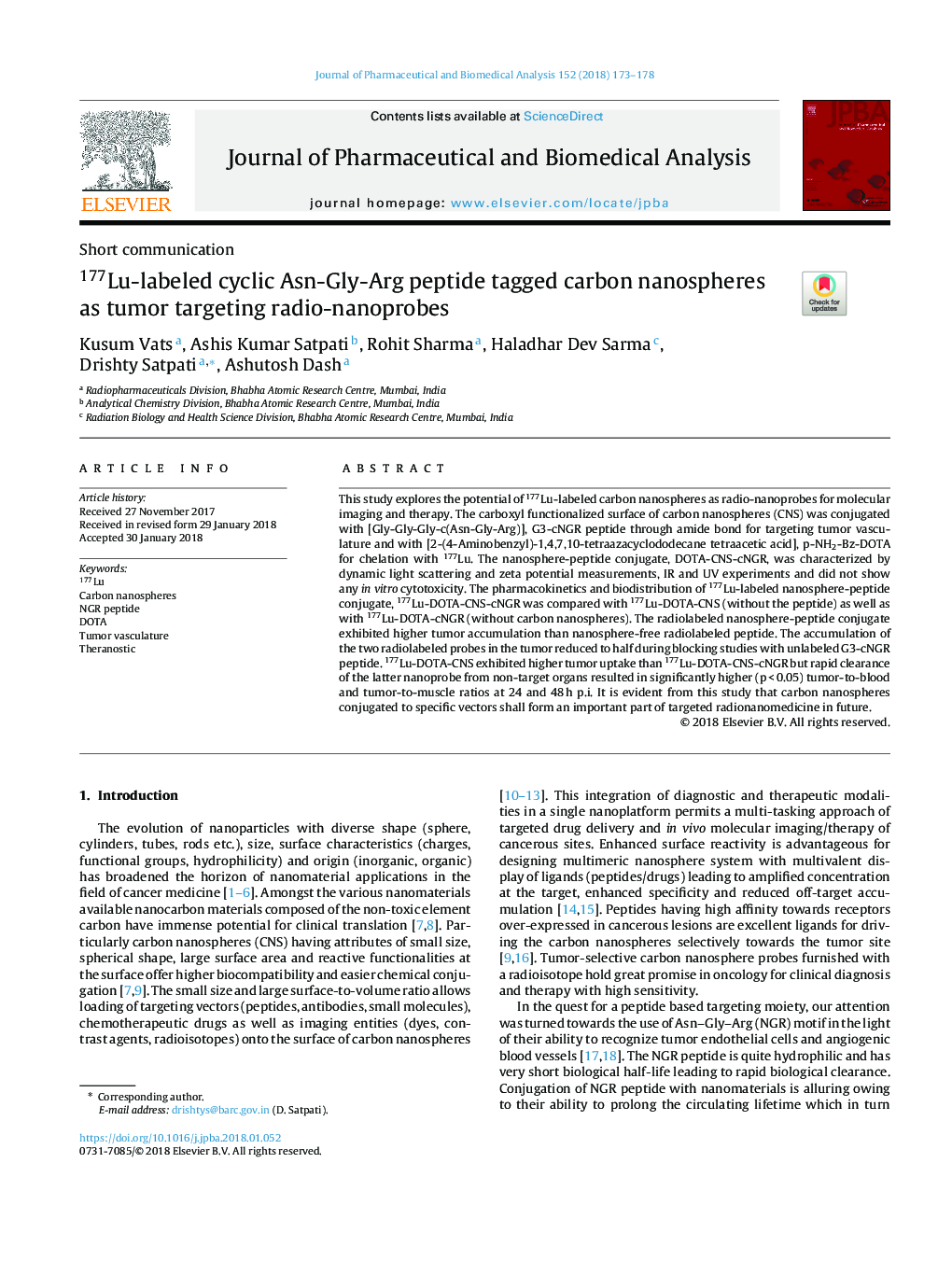| Article ID | Journal | Published Year | Pages | File Type |
|---|---|---|---|---|
| 7627010 | Journal of Pharmaceutical and Biomedical Analysis | 2018 | 6 Pages |
Abstract
This study explores the potential of 177Lu-labeled carbon nanospheres as radio-nanoprobes for molecular imaging and therapy. The carboxyl functionalized surface of carbon nanospheres (CNS) was conjugated with [Gly-Gly-Gly-c(Asn-Gly-Arg)], G3-cNGR peptide through amide bond for targeting tumor vasculature and with [2-(4-Aminobenzyl)-1,4,7,10-tetraazacyclododecane tetraacetic acid], p-NH2-Bz-DOTA for chelation with 177Lu. The nanosphere-peptide conjugate, DOTA-CNS-cNGR, was characterized by dynamic light scattering and zeta potential measurements, IR and UV experiments and did not show any in vitro cytotoxicity. The pharmacokinetics and biodistribution of 177Lu-labeled nanosphere-peptide conjugate, 177Lu-DOTA-CNS-cNGR was compared with 177Lu-DOTA-CNS (without the peptide) as well as with 177Lu-DOTA-cNGR (without carbon nanospheres). The radiolabeled nanosphere-peptide conjugate exhibited higher tumor accumulation than nanosphere-free radiolabeled peptide. The accumulation of the two radiolabeled probes in the tumor reduced to half during blocking studies with unlabeled G3-cNGR peptide. 177Lu-DOTA-CNS exhibited higher tumor uptake than 177Lu-DOTA-CNS-cNGR but rapid clearance of the latter nanoprobe from non-target organs resulted in significantly higher (pâ¯<â¯0.05) tumor-to-blood and tumor-to-muscle ratios at 24 and 48â¯h p.i. It is evident from this study that carbon nanospheres conjugated to specific vectors shall form an important part of targeted radionanomedicine in future.
Related Topics
Physical Sciences and Engineering
Chemistry
Analytical Chemistry
Authors
Kusum Vats, Ashis Kumar Satpati, Rohit Sharma, Haladhar Dev Sarma, Drishty Satpati, Ashutosh Dash,
